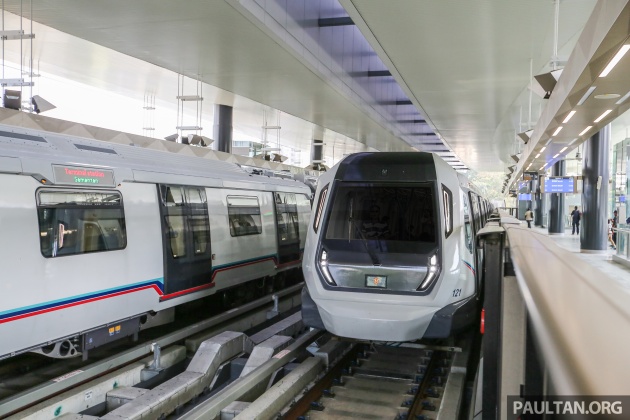The Mass Rapid Transit (MRT) Sungai Buloh-Kajang line has ferried around 7.4 million passengers since it began operating, Bernama reports. Phase one of 51 km-long stretch of urban rail began operations in December, and phase two was opened to the public in July.
According to Rapid Rail CEO Datuk Zohari Sulaiman, during the period, an average of about 100,000 commuters used the MRT each day on working days while on weekends, the number rose to around 140,000.
“The station getting the most number of passengers is Bukit Bintang, which takes people to the Kuala Lumpur Golden Triangle area where there are well-known shopping complexes like Pavilion and Lot 10,” he said. He added that the number of passengers is expected to increase during the 2017 SEA Games (KL2017), which runs until August 30.
The MRT is projected to reduce traffic entering KL daily by 160,000 vehicles, based on an estimated 400,000 riders per day. It’s also expected to reduce up to 34,400 tonnes of carbon dioxide emissions yearly, and the train service is also capable of reducing the cost of living for Klang Valley folk, according to domestic trade, cooperatives and consumerism (KPDNKK) minister Datuk Seri Hamzah Zainudin.
Looking to sell your car? Sell it with Carro.












AI-generated Summary ✨
Comments generally support the MRT project, praising it for serving millions and reducing traffic congestion, though some are skeptical about the actual impact and question the passenger count figures. Many highlight the MRT's role in easing commutes, with some criticisms about maintenance, breakdowns, and the quality of data. There’s also discussion about the high proportion of foreign workers using the system, and skepticism about its financial sustainability. Several comments express pride in the MRT's achievement, while others complain about service delays, fare concerns, and political issues related to concession and government policies. Overall, sentiment is mixed but leans toward appreciation of the MRT’s contributions to public transport, contrasted by doubts about operational efficiency and actual benefits.